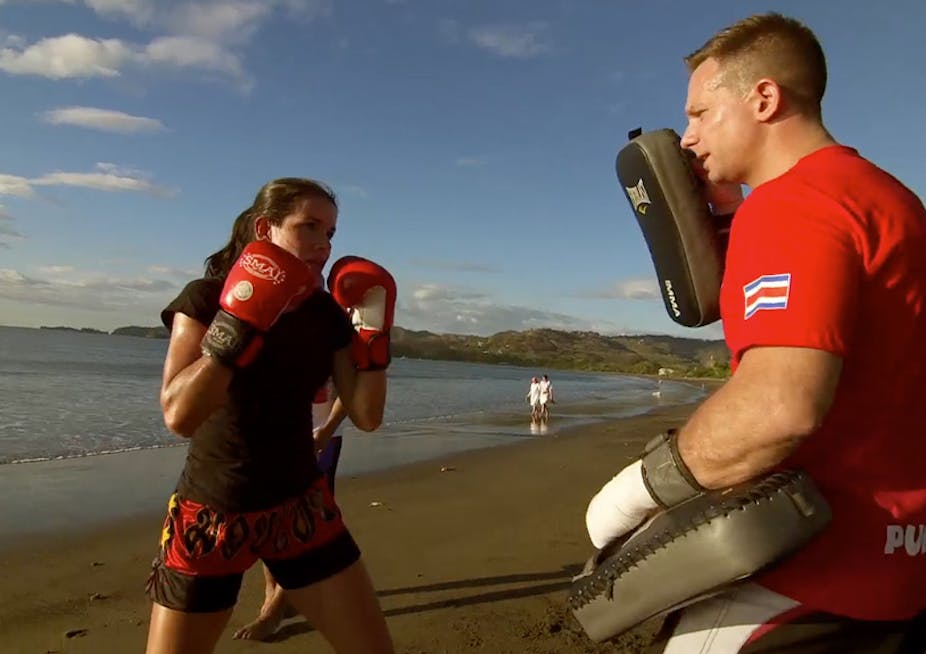In October the Church of Jesus Christ of Latter-day Saints released its new documentary Meet the Mormons to wide theatrical distribution. The film depicts the lives of six individuals – two women and four men – whose career and family choices reflect lives grounded in Christian belief, strong families, and humanitarian action.
The film was met with some curiosity by non-LDS observers, and great excitement by members of the church. To both groups, it signaled the arrival of a Mormon public relations campaign packaged for broad, public consumption.
A history of public engagement
Meet the Mormons should be seen as a natural outgrowth of the Church’s past efforts to showcase Mormonism through personal stories. One needs only to look back at the “Homefront” television advertisements of the 1970s and 80s, and the more recent “Family: Isn’t it About Time?” spots to recognize a consistent theme: the church emphasizes feel-good family values, universal faith, and Christian service, while downplaying or omitting any unusual doctrines and practices.

In fact, the LDS Church has had more than 100 years to refine its razor-sharp public relations skills. Since appearing at the Chicago World’s Fair and international exhibitions in the late 19th Century, the church has aimed to balance two competing impulses: how to display a picture of Mormonism that is both mainstream and non-threatening, but also exceptional and peculiar in its beliefs.
Meet the Mormons, which has grossed nearly $5.4 million and has been shown in 317 theaters, is one of the church’s most extensive public outreach efforts to date.
Responding to negative press?
Like much of the church’s past media efforts, Meet the Mormons might be aimed at addressing legitimate issues regarding the Church’s conflicted history of racism. See, for example, the 2012 firestorm over BYU religion professor Randy Bott’s use of racist doctrines to justify the Church’s pre-1978 priesthood exclusion for black males.
The widespread media attention that “Bottgate” received in the months during Mitt Romney’s presidential campaign – and the Church’s firm response to it – now provides an interesting correlation in the planning and pre-production of Meet the Mormons.
There is no question that the six individuals were consciously chosen to portray a picture of Mormonism that is racially diverse. Four of the six subjects are people of color, and a fifth is the mother of a biracial child. They include an African-American bishop, a Samoan-American football coach, a Costa Rican female kickboxer who balances ambition with maternal responsibilities, and a Nepalese engineer and humanitarian. At the end of the film, the narrator reminds the audience that “Mormons come in all sizes, shapes, and colors.”
The film certainly strives to downplay the history and context of controversial elements of Mormonism – like its history of discrimination – and replace it with a forward-facing Mormonism that is racially and culturally inclusive. In some ways, Meet the Mormons appears to be moving the Church’s message forward for both Mormons and non-Mormons alike, showing how the Church is working out its internal transitions and doing so in front of a global audience.
Meet the Baptists
In obvious ways, Meet the Mormons is about Mormonism. But this film is also about what is happening to traditional religions in an increasingly secularized world. All religions – Mormonism included – share a concern about their ability to attract new members, a declining interest among Millennials, and some understandable embarrassment about historical problems, odd practices, and past messages of exclusivity.
The LDS Church is not unique in its PR efforts. The Sherwood Baptist Church in Albany, Georgia, produces films – like Facing the Giants and Flywheel – that also seek to positively portray the church. Even the Mormons’ own “I’m a Mormon” campaign has already been noted for similarities to the “I am a Scientologist” campaign, which featured individuals speaking in 40-to-50-second spots, using a familiar script: “My name is ____. I’m a ____. And I am a Scientologist.” Other projects like “Why I’m an Episcopalian” and “Inspired by Muhammed” have followed similar patterns.
Propaganda or push back?
So what are the larger effects of this project? Some see this as a harmless feel-good film meant to normalize observers’ perceptions of a global, but perpetually misunderstood religion. Others have pegged this as part of a subtle evangelizing campaign, with an eye toward gaining sympathetic followers (while the film avoids any deep theological discussions, it still gives appealing nods to Mormon scripture, family values, a healthy lifestyle, the importance of missionary work, and Sunday worship practices). Still others mark the film as a concerted propaganda effort aimed at recovering the Church’s bruised public image from a sometimes troubled past of racism, sexism, and insularity.

Yet bigotry and exclusivity are not unique to Mormonism. There is an underlying antagonism that the Church has long endured from both the right and the left – and by critics who have been plagued by their own issues of racism and religious intolerance. For all the contradictions in Mormon ideology and the religion’s checkered past, there’s the claim that some of the religion’s most virulent critics were sexist and racist themselves.
The LDS Church has long ago learned the strategy of being defensive without being offensive, of pushing back against generic anti-Mormonism with appealing snapshots of the best that Mormonism has to offer. Meet the Mormons and its website are a technologically sophisticated example of a long-standing campaign, but for a 21st century audience.
Whether these positive portrayals and inspiring stories of a group of diverse Mormons will help mute the contradictions of Mormonism remains to be seen.

